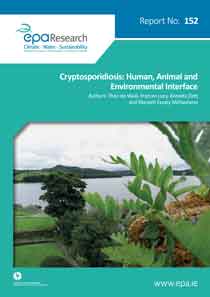Summary: The aim of this study was to investigate the monthly prevalence of Cryptosporidium in farm animals during March–June over two years in two catchments – the Liffey and Lough Gill – in the east and west of Ireland.

Cryptosporidium spp. are protozoan parasites that can cause gastro-intestinal illness with diarrhoea (cryptosporidiosis) in a wide range of hosts. In fact, some species of Cryptosporidium can infect a broad range of hosts, whereas other species have a more restricted host range. While cryptosporidiosis is a selflimiting infection, it can lead to severe problems in an immunocompromised or young host. Cryptosporidiosis is also considered one of the main causes of diarrhoea in neonatal ruminants. In Ireland human cryptosporidiosis became a notifiable disease at the beginning of 2004, which means that any outbreaks must by law be reported to government authorities.
Most cases of human cryptosporidiosis usually occur in spring which is considered by many epidemiologists to be linked to animal lambing and calving during the spring. It was believed that the higher disease incidence in rural – as opposed to predominantly urban – regions in Ireland suggested that animal contact or waterborne transmission play a more important role in Ireland than person-to-person spread, food or travel, as the latter would be expected to have a more even geographical distribution.
The aim of this study was to investigate the monthly prevalence of Cryptosporidium in farm animals during March–June over two years in two catchments – the Liffey and Lough Gill – in the east and west of Ireland.
In addition to epidemiological investigations, methodologies for the detection and identification of Cryptosporidium spp. in asymptomatic animals were also assessed. Using both microscopic fluorescent in-situ hybridisation (FISH) and molecular methods, environmental samples were analysed to investigate the contamination of two catchments with Cryptosporidium spp.